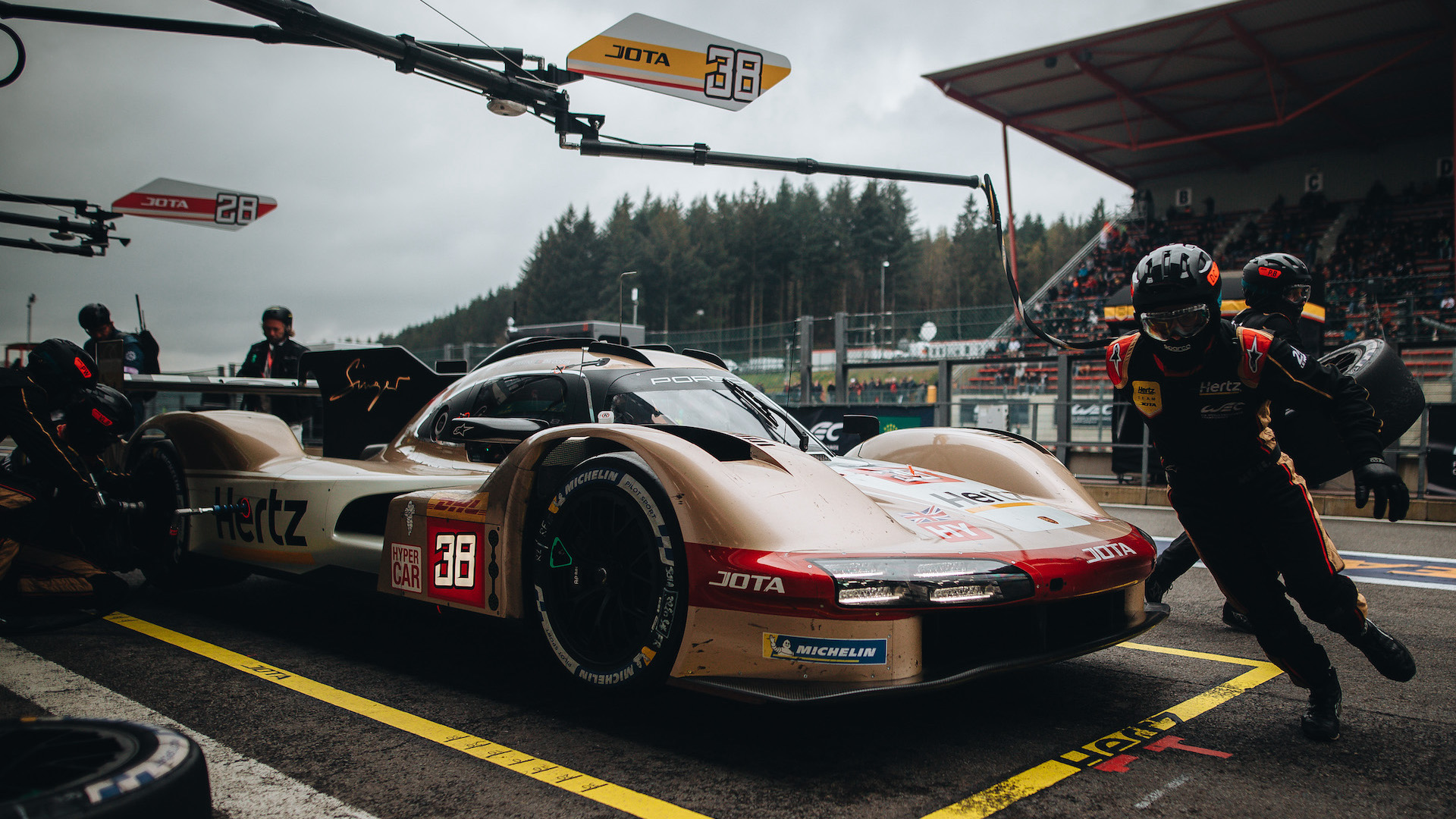

If you’re a professional racing team and your goal is to win the biggest race of them all, you’d likely be testing your car and then re-testing it again many, many months in advance. Or at least that’s what you’d hope to be able to do. Sometimes it doesn’t quite work that way and you only have like five or six weeks to prepare for the World Endurance Championship‘s crown jewel, the 24 Hours of Le Mans. That’s the case of Hertz Team Jota’s Porsche 963 Hypercar, which made its racing debut this past weekend at the 6 Hours of Spa.
I traveled to Belgium to learn how a privateer team tackles the daunting task of preparing for the world’s biggest endurance race with extremely limited testing. As of Friday, April 28—the day before the race at Spa-Francorchamps—Hertz Team Jota had only been in possession of its Porsche 963 for less than a week. Testing? Only about an hour-long shakedown at the manufacturer’s home track in Weissach. With a storied history in motorsport, Jota isn’t new to monumental challenges, but it certainly picked a good one this time around.





While I’ll be diving deeper into the team’s build-up to Le Mans in a separate story, I thought I’d take you for a sneak peek behind the pit wall like we’ve done at other races before. Needless to say, the amount of preparation that goes into an endurance race—even one that’s “just” six hours—is mind-boggling. It’s not just about making the hardware last—the engine, transmission, brakes, bodywork, etc.—but these Hypercars run extremely complex software that requires a small army to operate.
“We have about nine engineers on this project, and I would say at least five of them are committed to just software,” team co-owner Sam Hignett told me. “We get an enormous amount of data from the cars and we gotta do study it to understand what the car is doing.”




When it comes to the task of actually driving the car, that’s no easy task. Will Stevens, one of the three drivers of the No. 38 Porsche 963 Hypercar, showed me how the complex steering wheel is. You can watch that video here. After a detailed rundown of what every button on the steering wheel does, he claimed that he still had quite a bit to learn over the weekend given it was the car’s maiden race.




“It’s not so much where the buttons are and what they do because that’s easy to study, but how each setting affects the car and how it feels,” Stevens told me. “You can only understand that when actually driving the car.”
The team’s overall objective for the weekend was clear: reliability first, performance second. Everyone at Hertz Team Jota wanted to make extra sure the car could go the distance because, well, that’s important in an endurance race. After qualifying seventh, the Porsche was able to run a smooth race and ultimately finish sixth. It may not sound like much to some, but that’s quite a feat for a new, highly-complex racing machine operated by staff who aren’t completely up to speed with it yet.



By the end of the six-hour race, the car had lapped the grueling Belgian race track 148 times and consistently reached a top speed of 201 mph on the Kemmel straight. In a nutshell, they nailed their objective.
As for its goals to accomplish between now and Le Mans in June, the team’s technical director Tomoki Takahashi put it rather bluntly: “Reliability, performance, and getting as much sleep as we can.”
Got a tip? Email us at tips@thedrive.com